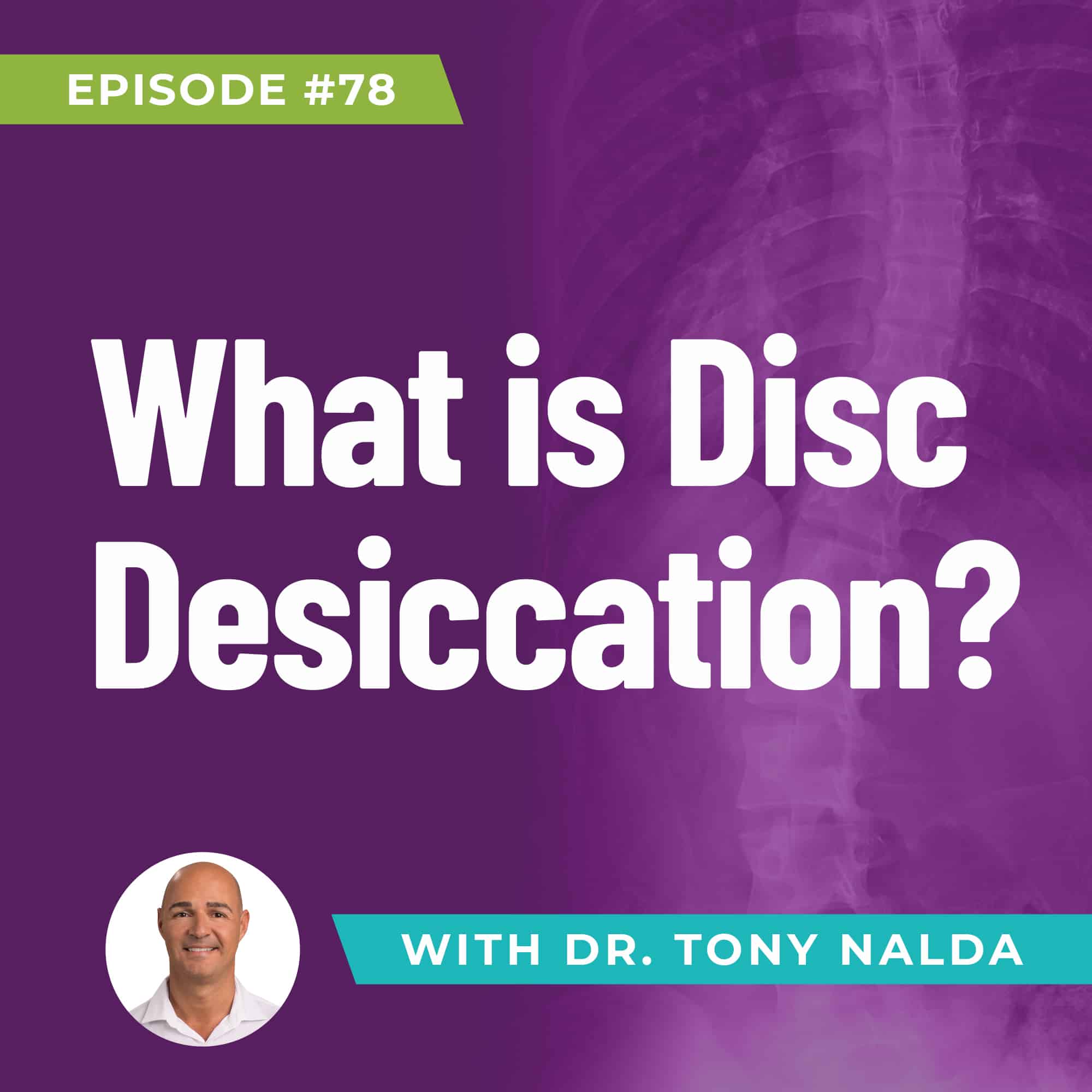Episode 78: What is Disc Desiccation?
When patients undergo spinal conditions such as low back pain, mid-back pain, or neck pain, they are often prescribed MRI scans. From these scans, findings are obtained, with one prevalent result often linked to these symptoms known as disc desiccation.
Disc desiccation occurs when the spine shifts out of alignment, leading to degeneration and loss of hydration in the discs.
Degenerative Disc Disease
Contrary to its name, degenerative disc disease isn't a contagious ailment but a mechanical process affecting all spinal discs. This is often attributed to prolonged misalignment, causing discs to age faster than the rest of the spine. Symptoms include stiffness, limited motion, pain, tingling, numbness, and weakness.
Treatment Approach
In order to treat this, the primary focus is to correct spinal alignment issues. It is important to realign the spine based on the specific location of disc desiccation. Lifestyle changes, such as addressing prolonged sitting and excess weight, are recommended. Rehabilitation methods like traction, chiropractic adjustments, and prescribed home exercises aim to stabilize misalignments.
Preventive Measures
Proactivity and prevention are key to maintaining spinal health. Regular exercise, proper posture, and periodic checkups are highlighted as crucial for early detection and correction of posture issues. Maintaining proper spinal alignment can prevent degenerative changes and reduce the risk of disc desiccation.
To know more, check out Dr. Tony Nalda’s podcast.
Artlist.io 847544
Podcast: Play in new window | Download
Subscribe: RSS
Dr. Tony Nalda
DOCTOR OF CHIROPRACTIC
After receiving an undergraduate degree in psychology and his Doctorate of Chiropractic from Life University, Dr. Nalda settled in Celebration, Florida and proceeded to build one of Central Florida’s most successful chiropractic clinics.
His experience with patients suffering from scoliosis, and the confusion and frustration they faced, led him to seek a specialty in scoliosis care. In 2006 he completed his Intensive Care Certification from CLEAR Institute, a leading scoliosis educational and certification center.
About Dr. Tony Nalda
 Ready to explore scoliosis treatment? Contact Us Now
Ready to explore scoliosis treatment? Contact Us Now








